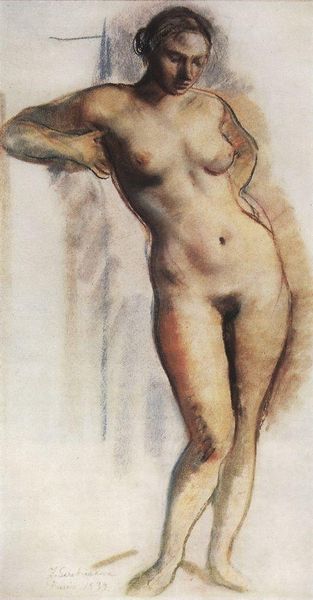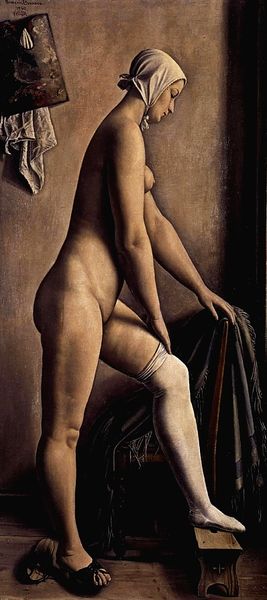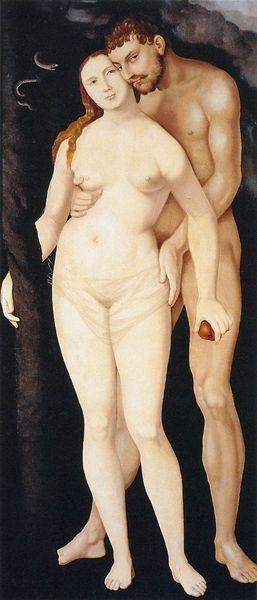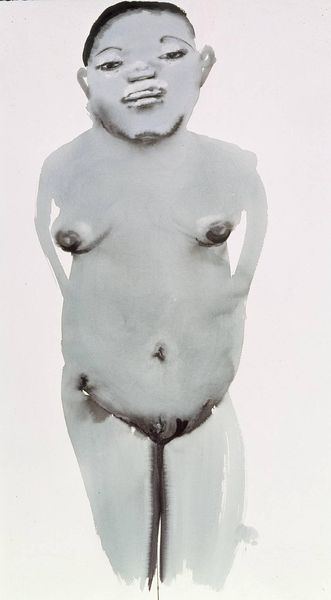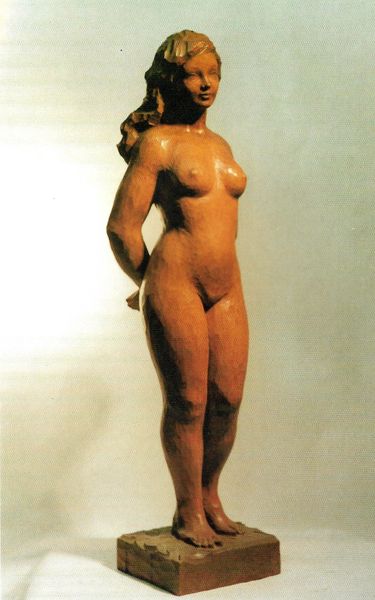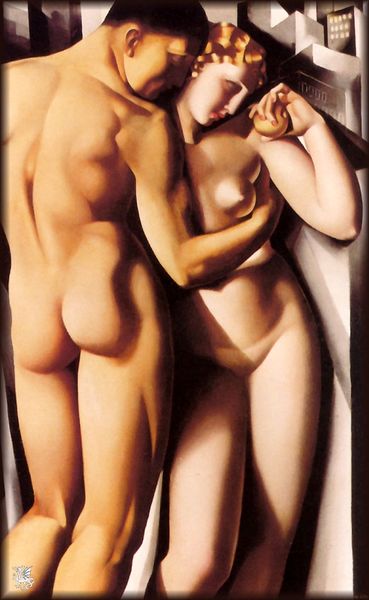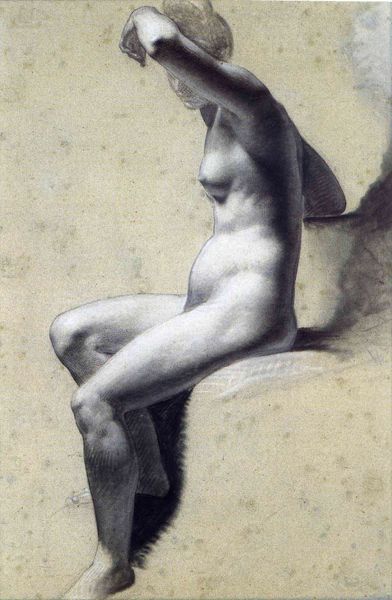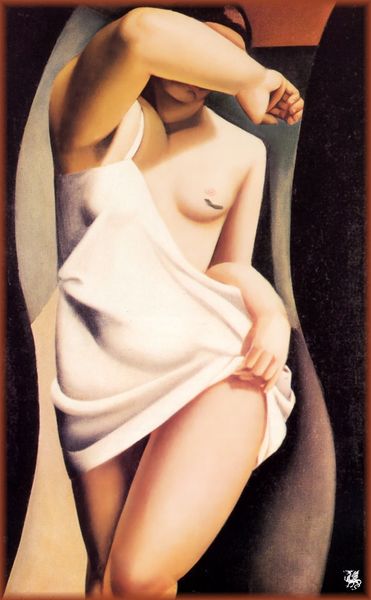
Eve, from the right wing of the Ghent Altarpiece 1429
0:00
0:00
janvaneyck
St. Bavo Cathedral, Ghent, Belgium
painting, oil-paint
#
allegory
#
painting
#
oil-paint
#
figuration
#
11_renaissance
#
history-painting
#
northern-renaissance
#
nude
Copyright: Public domain
Jan van Eyck painted "Eve" as part of the Ghent Altarpiece, a masterpiece of the early 15th century. The work presents a life-size, full-length nude figure in oil. The verticality and slender form, set against a dark backdrop, immediately draw the eye, but it’s the almost tactile quality of her skin that holds our gaze. Van Eyck's meticulous detail is not merely decorative; it's structural. Consider the semiotics of the apple: more than a symbol of temptation, it represents a pivotal break in the narrative structure of Christianity. Her rounded belly contrasts with the prevalent artistic norms of his time. The painting’s formalism is also a philosophical statement, reflecting the emerging Renaissance interest in humanism and the close observation of nature. In Eve’s lifelike representation, Van Eyck destabilizes the medieval symbolic order, challenging us to reconsider the established meanings of beauty, sin, and redemption.
Comments
No comments
Be the first to comment and join the conversation on the ultimate creative platform.

